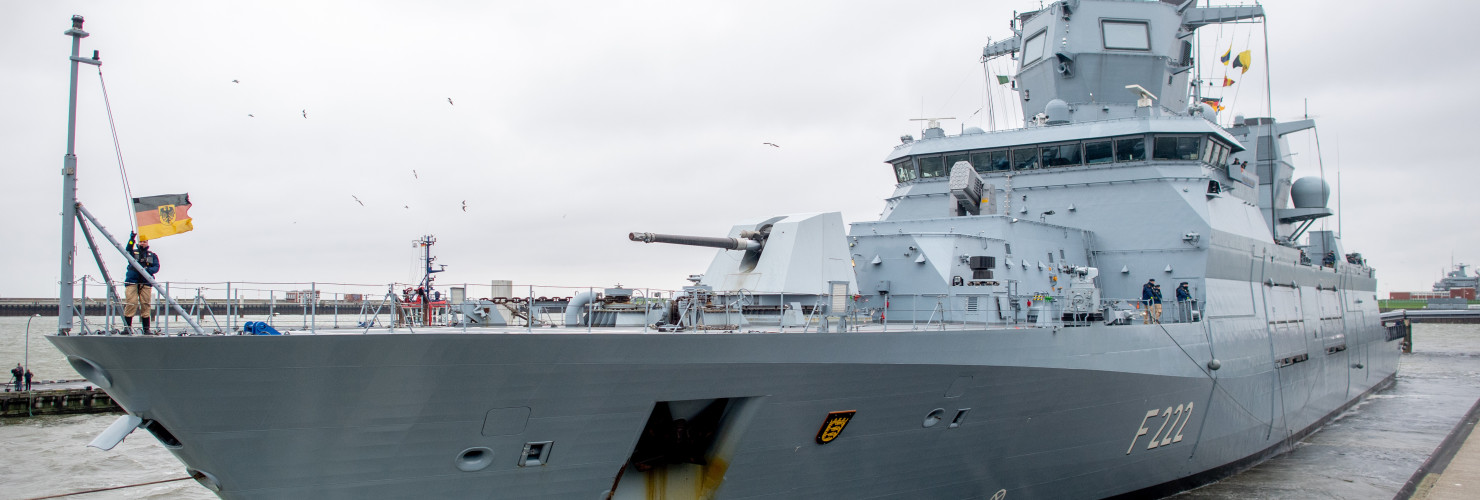

The Bundeswehr returns to the Indo-Pacific
Germany’s navy and air force are planning to beef up their participation in various military exercises halfway around the world in 2024. This speaks of a clearer strategy vis-à-vis China and the region, says Helena Legarda.
It is two years into German Chancellor Olaf Scholz’ Zeitenwende, which was meant to redefine the country’s approach to security and defense, and Germany is still deep into debates about what its role in Europe’s security architecture should look like. While the clashes over the delivery of Taurus cruise missiles to Ukraine continue, however, Germany has made some quiet progress on its Indo-Pacific goals.
Diplomatic engagement with the region has definitely ticked up. In mid-March, Berlin played host to no fewer than three Southeast Asian leaders in the same week. Scholz’ meetings with Malaysian Prime Minister Anwar Ibrahim, Philippine President Ferdinand Marcos Junior, and Thai Prime Minister Srettha Thavisin were a clear sign of political interest in deepening Germany’s presence and ties in the Indo-Pacific. It is also part of Berlin’s search for alternative partners as Europe’s push to diversify and de-risk ties with China gains steam.
Expanding security engagements
Germany’s activities in the region are increasingly moving beyond the diplomatic realm, however. The government’s first-ever China Strategy, released in July 2023, may have been more of a position paper than a proper strategy. But it has created a baseline allowing the defense ministry and other parts of the government to expand their security engagements in the region.
In the weeks to come, the German military is expected to send its frigate Baden-Württemberg to the region, three years after the German Navy’s first deployment to the Indo-Pacific in over 20 years. Simultaneously, the German Air Force is planning an exercise tour of the region. These deployments will be bigger and more ambitious than the Navy and Air Force’s last forays into the region, in 2021 and 2022.
The 32 German aircraft will be joined by French and Spanish planes to create a roughly 50-aircraft strong European contingent that will reportedly participate in multinational exercises in Alaska, Japan, Australia, and India between June and August. The German part of this contingent will reportedly join up with the Baden-Württemberg and the combat support ship Frankfurt Am Main that will accompany it to participate in the US-run RIMPAC exercise near Hawaii, in what would be a first for the Bundeswehr.
Indo-Pacific tensions are at a high point
These German deployments come at a time when tensions in the region are worsening. China and the Philippines have been trading barbs for months, largely over the grounded Philippine ship Sierra Madre’s presence in the Second Thomas Shoal (which China claims). And these are now escalating, with a number of clashes and (near) collisions between Chinese and Philippine coast guard vessels in the area.
The rise in tensions is increasingly drawing responses from other regional actors. South Korea has been vocal about its concerns over China’s use of water cannons against Philippine vessels and the recent collision of Chinese and Philippine ships, drawing a strong rebuke from Beijing. Seoul has been accused of abandoning its former “prudent and neutral” position for daring to criticize China’s actions, as a country that is not a party to the dispute and therefore has no right to “take sides and stir up trouble.” Driven by their shared interests in the region and their respective tensions with China over the latter’s territorial claims in the East and South China Seas, Tokyo and Manila have also inked a series of new agreements to strengthen their bilateral security cooperation.
Manila, in the meantime, seems intent on holding its ground in the area. A recent report in the Philippine The Manila Times newspaper claimed that over the last few months the Marcos government has ignored a number of Chinese concept papers and proposals on some of the friction points between the two nations. This leak forced the Philippine Department of Foreign Affairs to admit the existence of these proposals, as well as a number of their own counterproposals. While Beijing also claims that Manila never responded, choosing instead to provoke China at sea, Manila maintains that China’s proposals were not ignored. Rather, they were rejected for running counter to Philippine national interests. This saga reveals how deep tensions and mistrust between China and the Philippines run, increasing the risk that the situation might escalate further.
And don’t forget that Taiwan’s President-elect Lai Ching will be inaugurated on May 20. A hot conflict remains very unlikely, but chances are that Beijing will react aggressively in the following weeks if Lai’s speech or cabinet are deemed to be too independent leaning.
The role of Germany’s new China strategy
Against this background of ratcheting tensions, are Germany’s renewed interest in and upcoming military missions to the Indo-Pacific signs that Berlin is finally ready to wade into the troubled waters of the South China Sea? The short answer is that it remains to be seen, but the German government—or at least some parts of it—seems more willing to take action and more comfortable confronting Beijing’s potential reactions.
While not openly targeted at China, the naval and air deployments to the region have the clear objective of protecting stability and the rules-based international order which, of course, means pushing back against China’s actions in the South China Sea and beyond. Although the specific details of this year’s missions to the Indo-Pacific are still unconfirmed, especially where the naval deployment is concerned, the initial plans and framing seem to imply a substantial change from previous deployments. Back in 2021, Berlin went out of its way to prevent friction with China, by avoiding sailing through contested waters in the South China Sea and even by requesting a port call in Shanghai (the request was eventually denied by Beijing).
Multiple factors can help account for this new approach, but credit must also be given to the country’s new China Strategy. While China was barely mentioned in the government’s Indo-Pacific guidelines, published under Chancellor Angela Merkel in 2020, the new strategy provides a clearer stance and parameters on how to engage with an increasingly assertive and ambitious China.
A political decision could still be made to water down or adjust the upcoming military deployments to the Indo-Pacific, most likely as a way to reduce tensions in the bilateral relationship and secure economic benefits amid concerns among the German private sector over China’s potential reaction to Europe’s de-risking agenda. And Chancellor Olaf Scholz’ upcoming trip to China in April is a key moment to watch in this regard.
But the China Strategy seems to be working so far. The long process to get to an agreement within the various parts of Germany’s coalition government seems to have created a baseline consensus that can be used as justification by the defense ministry or other departments to increase the intensity of their presence in the Indo-Pacific, and to deal with tensions with Beijing without rushing toward disengagement at the first sign of pushback at home or abroad.
This article was first published by IP Quarterly on March 20, 2024.

